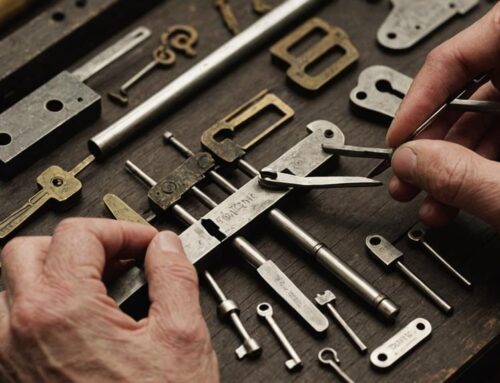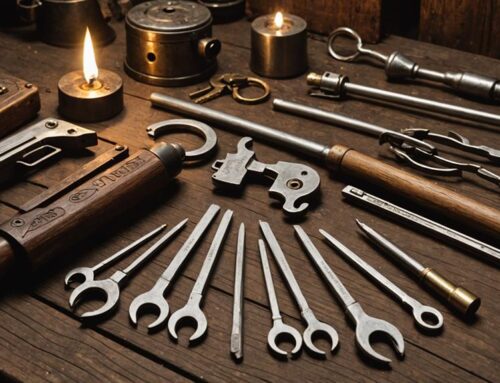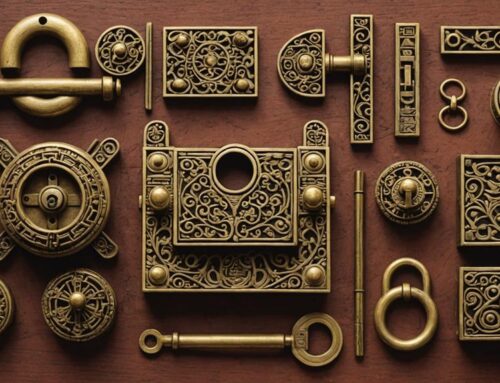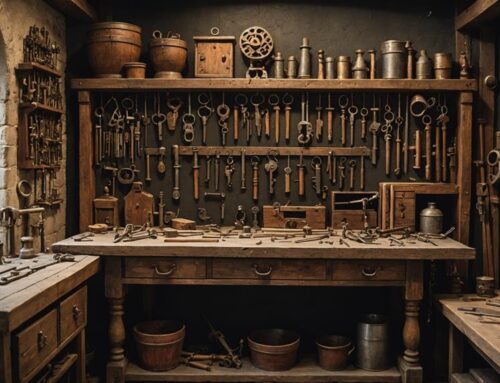Uncover the secrets of lock mechanisms by diving into various types like Pin and Tumbler, Wafer Tumbler, Disc Detainer, and Tubular locks. Practice single pin picking, raking techniques, and using tension wrenches to finesse your lock-picking skills. Get familiar with wafer manipulation, rocking, and scrubbing for successful Wafer Tumbler lock picking. Explore the complex world of Disc Detainer locks, understanding the intricate alignment required for security. For Tubular locks, employ unique tools and techniques with ethical considerations. Mastering these methods can open new doors, allowing you to become an expert in lock manipulation and security exploration.
Key Takeaways
- Pin and tumbler locks use key pins and driver pins for security.
- Techniques include single pin picking and raking for lock manipulation.
- Wafer tumbler locks have individual wafers aligning to open.
- Disc detainer locks offer high security with rotating discs.
- Tubular locks require special tools and technique for picking.
Pin and Tumbler Locks
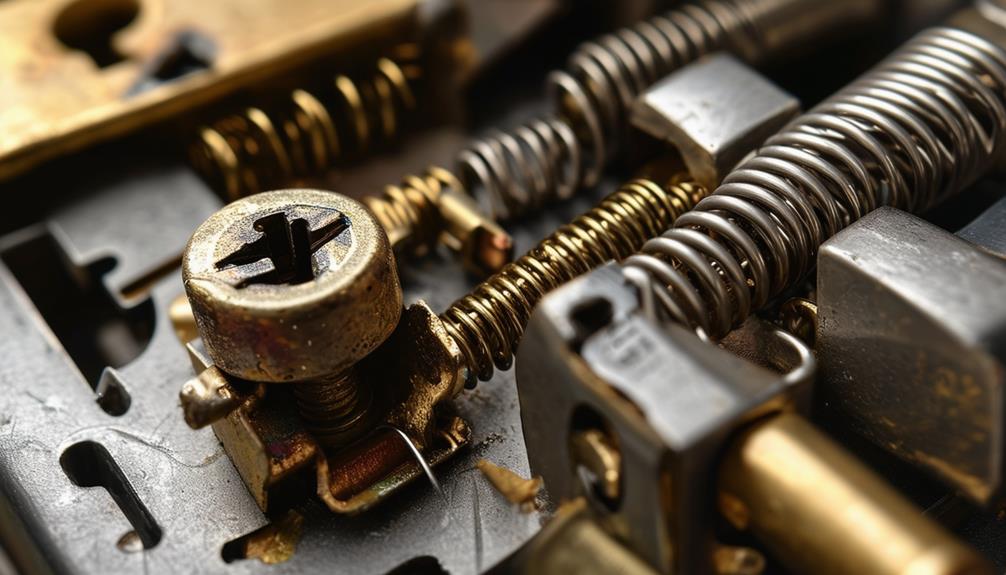
When engaging with pin and tumbler locks, understanding their inner workings is essential. These lock mechanisms are commonly found in residential and commercial settings due to their reliability and effectiveness in securing doors.
The basic principle behind pin and tumbler locks involves a set of pins of varying lengths that prevent the lock from turning without the correct key. Each pin is divided into two parts: the key pins, which rest in the keyway, and the driver pins, which are spring-loaded and sit above the key pins.
When the correct key is inserted, it pushes the key pins to the correct height, aligning all the pins along what's known as the shear line. This intricate pin and key mechanism prevents unauthorized access, making them a popular choice for securing properties.
How to Pick Pin and Tumbler Locks
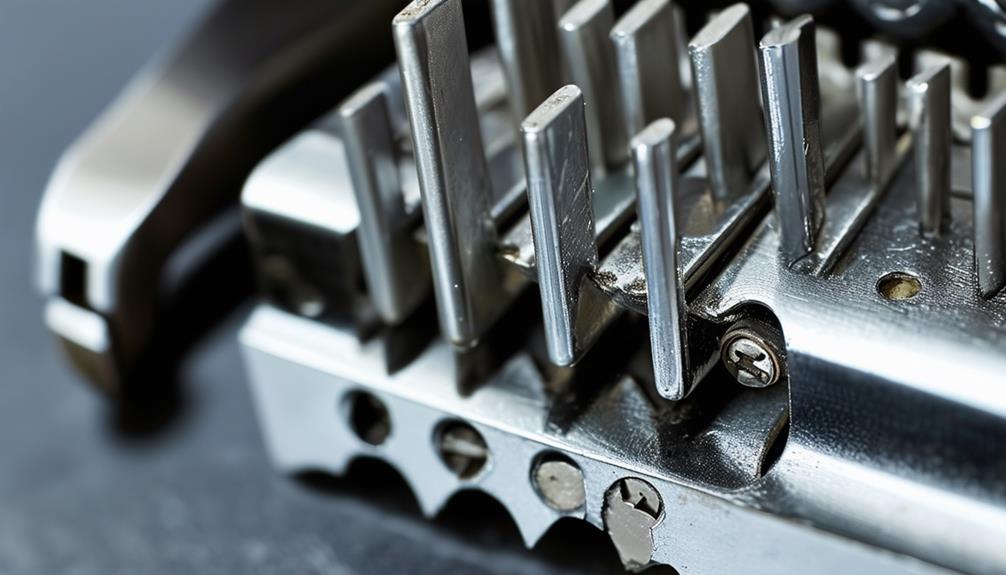
Understanding how to pick pin and tumbler locks requires a grasp of the inner workings of these common security mechanisms.
Pin and tumbler locks consist of a series of spring-loaded pins of varying lengths that align along the shear line when the correct key is inserted. To effectively pick these locks, it's important to familiarize yourself with mastering pin tumbler lock picking techniques that can greatly enhance your skill set.
One common method is the single pin picking technique, where you manipulate each pin individually until all pins align correctly. Another technique is raking, which involves rapidly moving a rake tool across the pins to set them more quickly.
Applying tension to the lock with a tension wrench is essential in both techniques to mimic the key turning motion. Remember to practice these techniques carefully and patiently, as picking pin and tumbler locks requires skill and finesse.
Wafer Tumbler Locks
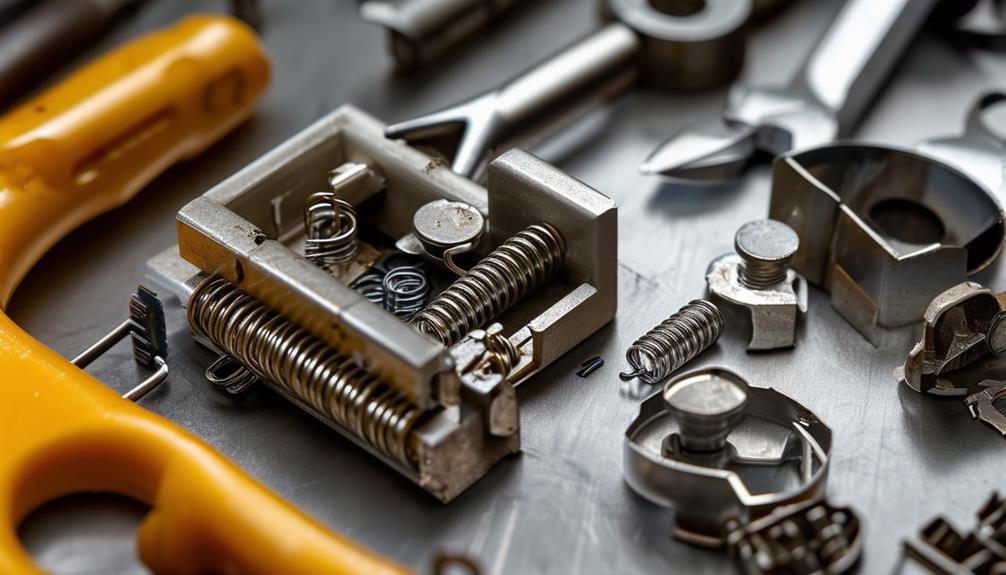
Let's talk about wafer tumbler locks.
These locks have unique components that differ from pin and tumbler locks. Understanding the picking techniques for wafer tumbler locks is essential for mastering this specific type of lock mechanism.
Wafer Tumbler Components
Wafer tumbler locks consist of individual wafers that align to allow the lock to open. These locks operate using a set of wafer tumblers that are stacked vertically within the lock cylinder. Each wafer has a slot cut into it to fit a specific key pattern. When the correct key is inserted, the wafers align at the shear line, enabling the lock to turn and open.
The main components of a wafer tumbler lock include the wafers themselves, the springs that push the wafers into the key's ridges, and the outer shell that houses the locking mechanism.
Understanding how these components interact is essential when learning about lock mechanisms and picking techniques.
To successfully pick a wafer tumbler lock, you need to manipulate each wafer individually until all wafers align at the shear line simultaneously. This alignment allows the lock to turn freely, granting access.
Picking Techniques
To effectively pick a wafer tumbler lock, you must master the art of manipulating each wafer individually until they align at the shear line simultaneously. This requires finesse and patience as you navigate the internal components of the lock.
Advanced lockpicking techniques involve using a tension wrench to apply slight pressure to the plug while using a pick to lift and manipulate the wafers.
One method for picking wafer tumbler locks is the raking technique, where you swiftly move the pick in and out of the keyway to jostle the wafers into place.
Another approach is single wafer picking, where you meticulously lift each wafer to the correct height before moving on to the next one.
Combination techniques, such as rocking and scrubbing, can also be employed to effectively pick these locks.
Picking Wafer Tumbler Locks
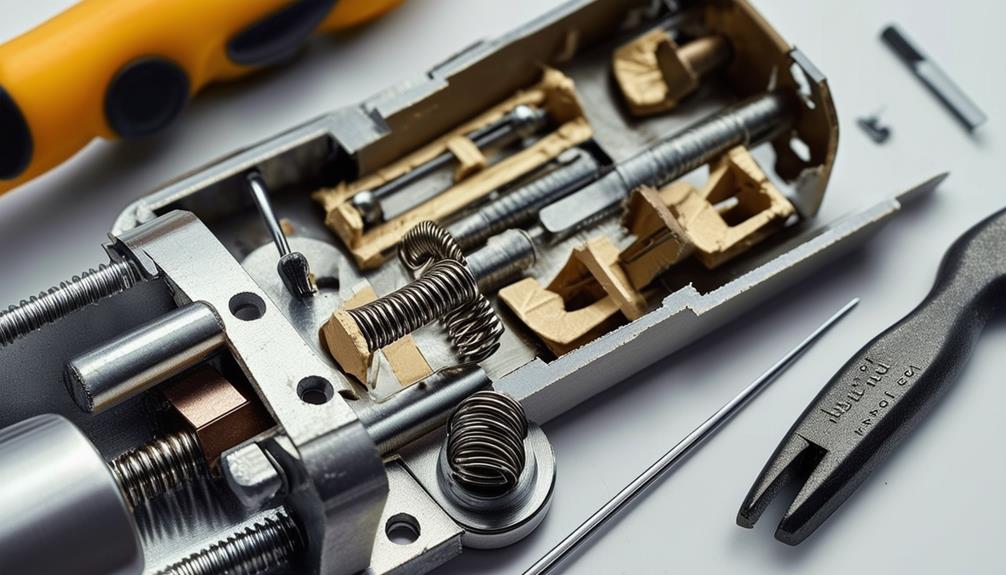
How can you effectively pick wafer tumbler locks? Wafer tumbler locks are commonly found in various types of locks, including some car doors and cabinets. These locks, while simpler than disc tumbler locks, still require a careful approach to guarantee successful picking.
To begin picking a wafer tumbler lock, you'll need a tension wrench and a wafer lock pick. Insert the tension wrench into the bottom of the keyway and apply slight pressure in the direction you'd turn the key to open the lock.
Next, insert the wafer lock pick above the tension wrench and gently lift each wafer one at a time. As you lift each wafer, you may feel a slight click or movement indicating that the wafer has been set. For added context, the design complexity of disc tumbler locks makes them more challenging to pick than pin tumbler locks.
Continue lifting and setting each wafer until all are in the correct position, allowing the lock to turn and open. Remember to maintain steady tension on the wrench throughout the process.
With practice and patience, you can effectively pick wafer tumbler locks.
Disc Detainer Locks
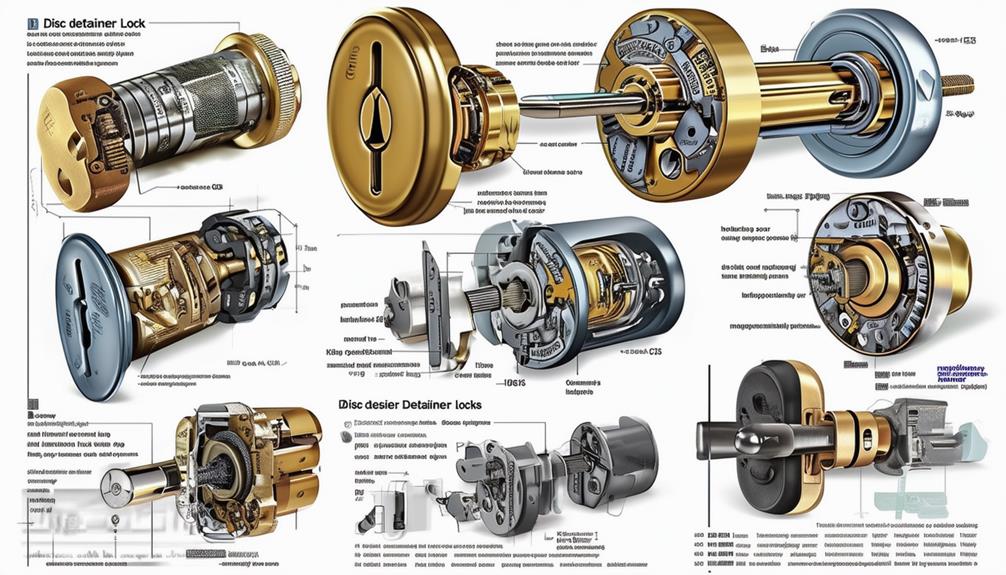
Let's talk about Disc Detainer Locks. These locks have a unique mechanism involving rotating discs instead of traditional pin tumblers.
Unlike standard locks, they require a specific alignment of the discs for the lock to turn, making them more challenging to pick. To pick them, specialized tools and techniques are required due to their intricate design and security features, such as essential tools for lock picking experts.
Understanding the basics of Disc Detainer locks is vital for locksmiths and enthusiasts alike to enhance their knowledge of lock mechanisms and picking methods.
Disc Detainer Basics
Disc detainer locks, also known as disc-detainer locks, are a type of high-security locking mechanism commonly used in padlocks and some door locks. Unlike pin tumbler locks, disc detainer locks operate using rotating discs instead of pins. These discs must align perfectly along the shear line to allow the lock to open, adding an extra layer of security.
Each disc in a disc detainer lock has a small notch cut into it, and these notches must align to create a gap for the sidebar to drop into, releasing the locking mechanism. Typically, these locks have multiple discs stacked on top of each other, with each disc needing to be rotated to the correct position for the lock to open.
Understanding the basics of how disc detainer locks function is essential for locksmiths and hobbyists interested in lock picking. By grasping the concept of aligning the discs to the shear line, individuals can better appreciate the complexity and security features of these locks.
Picking Techniques
To effectively pick disc detainer locks, one must master the technique of manipulating the individual discs to align them along the shear line. Professional lock picking requires precision and patience.
Start by inserting a tension wrench into the lock to apply slight rotational pressure. Use a pick with a small tip to manipulate each disc, feeling for feedback as they align.
Begin with the disc furthest from the keyway and work your way towards it, adjusting the tension as needed. It's essential to keep track of the discs you have successfully set to avoid resetting them accidentally.
Practice is key to developing the sensitivity required to detect the subtle movements of the discs. Remember, each lock may have its unique characteristics, so adapt your technique accordingly.
With dedication and practice, you can improve your skills in professional lock picking and successfully open disc detainer locks.
Security Features
Lock mechanisms play a critical role in ensuring the security of various assets, with disc detainer locks standing out for their robust design.
Disc detainer locks are known for their high level of security due to their complex internal mechanism. These locks contain a series of discs that must align perfectly to open the lock, making them challenging for unauthorized individuals to pick.
The security features of disc detainer locks include anti-pick pins, false gates, and rotating discs.
Anti-pick pins are strategically placed within the lock to prevent picking attempts. False gates create obstacles that mislead pickers, further enhancing security. Rotating discs add an extra layer of complexity, requiring precise alignment for successful opening.
Advanced Techniques for Disc Detainer Locks
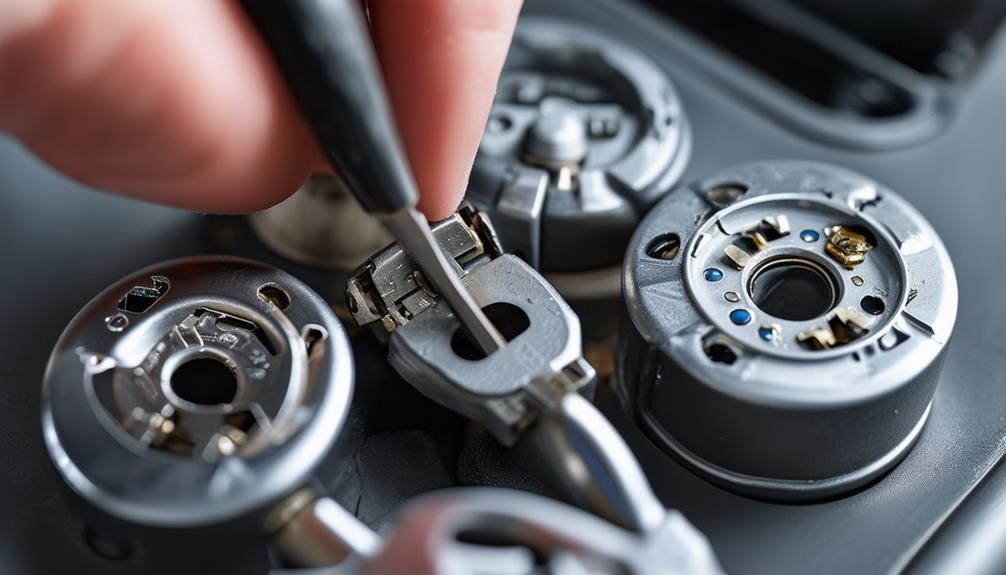
When dealing with advanced techniques for manipulating disc detainer locks, it becomes imperative to understand the intricate components and mechanisms that make up these high-security devices.
Disc detainer locks rely on a series of discs that must be rotated to specific angles to align with the sidebar, allowing the lock to open. The design of these locks often involves security features that can be challenging to bypass, making it essential to familiarize yourself with mastering high-security lock techniques.
To pick a disc detainer lock, you'll need specialized tools such as a tension wrench and a disc detainer pick. The tension wrench is used to apply rotational force to the discs, while the pick is used to manipulate the discs individually.
By carefully feeling for feedback from the discs and using precise movements, you can gradually manipulate each disc into the correct position. It's critical to maintain patience and practice finesse when working on disc detainer locks, as their design requires a delicate touch and a deep understanding of how each component interacts within the lock.
Mastering these advanced techniques can provide you with the skills needed to tackle even the most complex disc detainer locks.
Tubular Locks Picking Methods
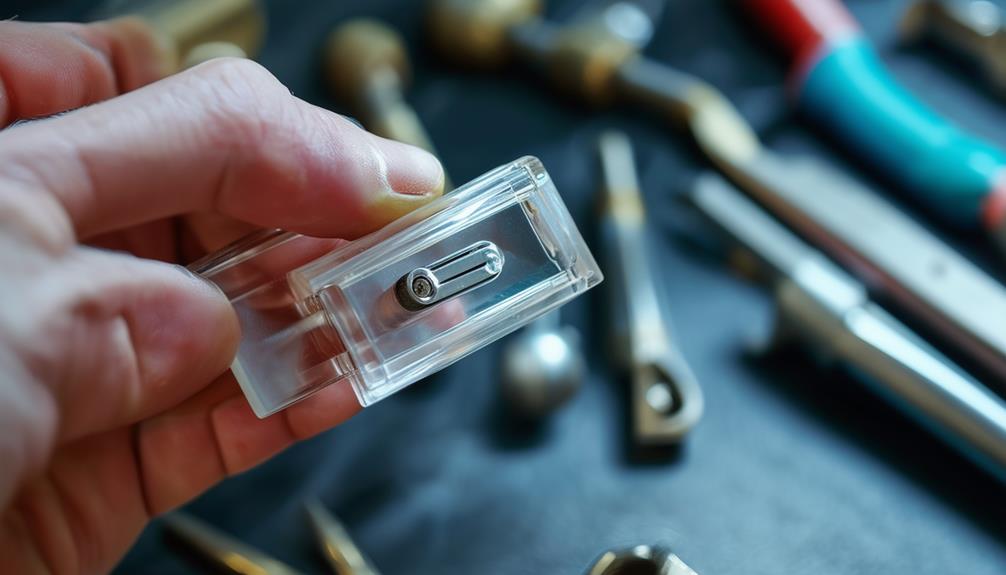
Utilizing specialized tools and techniques, picking tubular locks requires a unique approach due to their cylindrical keyways and pin configurations.
Tubular locks picking methods involve using a tubular lock pick, also known as a tubular lock decoder. These tools have a hollow, cylindrical shaft with pins inside that correspond to the pins in the lock.
To pick a tubular lock, it's important to purchase a practice lock to perfect your technique and become familiar with the lock's mechanics. Insert the pick into the keyway and apply gentle pressure while rotating it in the same direction as the key would turn.
As you rotate the pick, the pins inside the lock will align at the shear line, allowing the lock to turn and open. It's crucial to have a good understanding of the lock's inner workings and practice the technique to develop a feel for the pins.
With patience and practice, you can successfully pick tubular locks using these methods. Remember to always make sure you have permission to pick the lock before attempting to do so.
Frequently Asked Questions
Are Lockpicking Tools Legal to Own and Use?
Yes, lockpicking tools are legal to own and use in most places for locksmiths, security professionals, and hobbyists.
However, it's important to check your local laws and regulations to guarantee compliance. Misuse of lockpicking tools can lead to legal consequences, so always use them responsibly and ethically.
Stay informed about any restrictions or licensing requirements in your area to avoid any issues while practicing lockpicking.
Can Picking a Lock Damage It?
Picking a lock can potentially damage it due to the force exerted on the internal components.
This action may misalign the pins or break the springs inside the lock.
It's essential to remember that locks are designed to withstand external manipulation, so improper picking techniques can indeed cause harm.
Always proceed with caution and only attempt lock picking on locks that you own or have explicit permission to practice on.
How Do I Know if a Lock Is Pick-Resistant?
To determine if a lock is pick-resistant, look for features like security pins, tight keyways, and anti-drill plates.
High-security locks often have certifications from organizations like ANSI or UL.
Additionally, locks with sidebar mechanisms or other advanced technologies are harder to pick.
Consider consulting with a locksmith or doing research on specific lock brands known for their pick-resistant designs to guarantee your security needs are met.
Can Lockpicking Be Learned Online?
Yes, lockpicking can be learned online if you follow reputable sources and practice diligently.
Many tutorials and guides are available, offering step-by-step instructions and demonstrations.
Remember to always respect the laws and use this skill responsibly.
With dedication and patience, you can develop the necessary techniques to pick locks effectively.
Just be sure to prioritize ethical use and legal compliance in your learning process.
Are There Any Ethical Considerations When Picking Locks?
When picking locks, it's vital to take into account the ethical implications.
Breaking into a lock without permission can be illegal and unethical, violating others' privacy and security.
Always guarantee you have explicit consent or authorization before attempting to pick a lock.
Respecting others' property and privacy is essential, so use your newfound lockpicking skills responsibly and ethically to avoid any legal or moral repercussions.
Conclusion
So there you have it – you've now mastered the art of picking various lock mechanisms! You're practically a locksmith now, ready to tackle any locked door or padlock that stands in your way. Remember, with great power comes great responsibility, so use your newfound skills wisely. Just don't be surprised if your friends start calling you whenever they misplace their keys – you're the lock-picking hero they never knew they needed!



